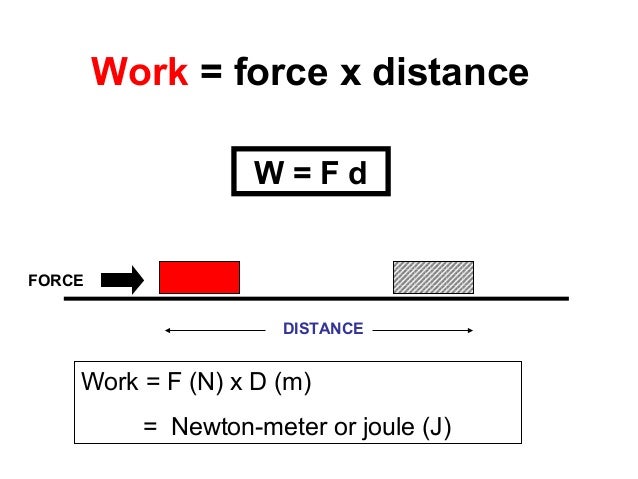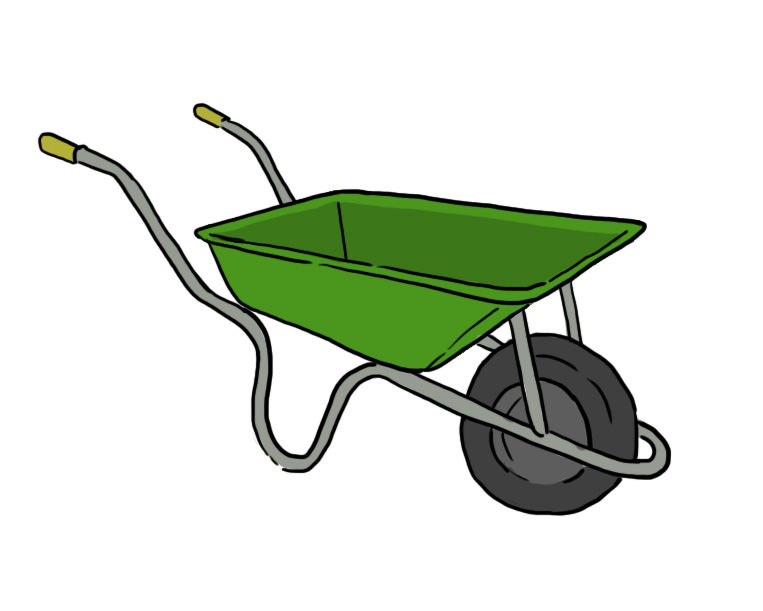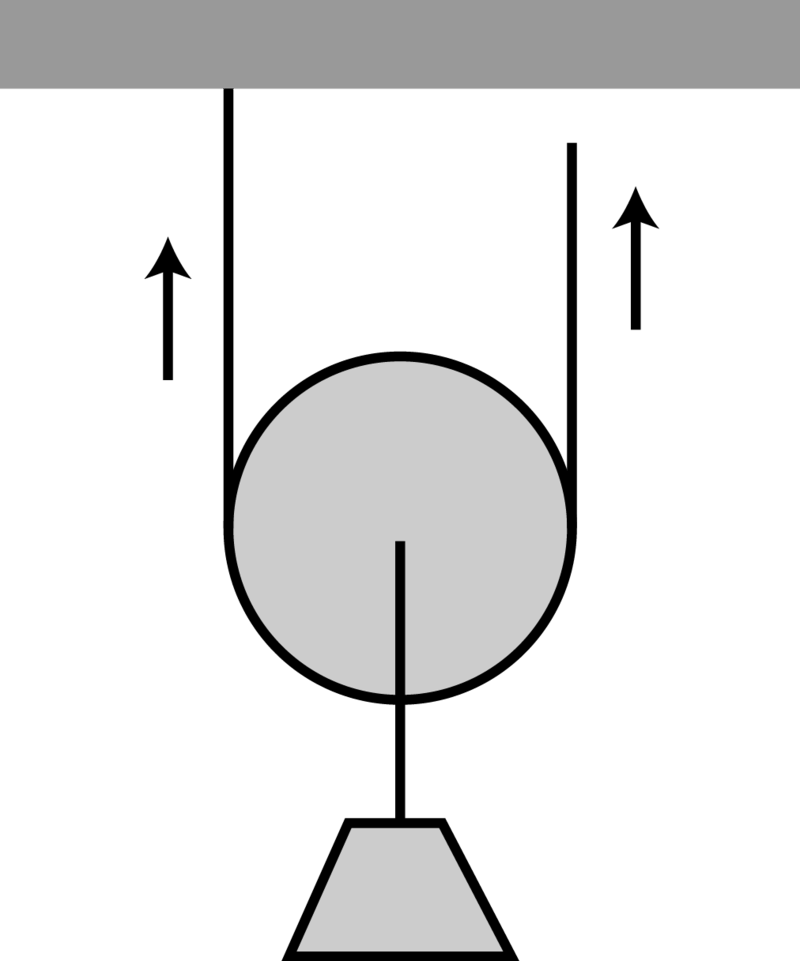Simple machines



What Is A Lever?
A lever is a simple machine consisting of a bar that rotates around a fixed point. The fixed point of a lever is called the fulcrum. Like other machines, a lever makes work easier by changing the force applied to the machine or the distance over which the force is applied.
Classes of Levers
Other levers change force or distance in different ways than a hammer removing a nail. How a lever changes force or distance depends on the location of the input and output forces relative to the fulcrum. The input force is the force applied by the user to the lever. The output force is the force applied by the lever to the object. Based on the location of input and output forces, there are three basic types of levers, called first-class, second-class, and third-class levers.
| Class of Lever | Example of Lever in This Class | Location of Input & Output Forces & Fulcrum* | Ideal Mechanical Advantage | Change in Direction of Force? |
|---|---|---|---|---|
| First class |
Seesaw
 |  |
1
< 1
> 1
|
yes
yes
yes
|
| Second class |
Wheelbarrow
 |  | > 1 | no |
| Third class |
Hockey stick
 |  | < 1 | no |
- Δ = fulcrum I = input force O = output force
What Is A Wedge?
A wedge is simple machine that consists of two inclined planes, giving it a thin end and thick end, as you can see in the Figure below. A wedge is used to cut or split apart objects. Force is applied to the thick end of the wedge, and the wedge, in turn, applies force to the object along both of its sloping sides. This force causes the object to split apart.

What Is a Pulley?
A pulley is a simple machine that consists of a rope and grooved wheel. The rope fits into the groove in the wheel, and pulling on the rope turns the wheel. Pulleys are generally used to lift objects, especially heavy objects. The object lifted by a pulley is called the load. The force applied to the pulley is called the effort.
Q: Can you guess what the pulley pictured above is used for?
A: The pulley is used to lift heavy buckets full of water out of the well.
Types of Pulleys
Some pulleys are attached to a beam or other secure surface and remain fixed in place. They are called fixed pulleys. Other pulleys are attached to the object being moved and are moveable themselves. They are called moveable pulleys. Sometimes, fixed and moveable pulleys are used together. They make up a compound pulley.
| Type of Pulley | How It Works | Example | No. of Rope Segments Pulling Up | Ideal Mechanical Advantage | Change in Direction of Force? |
|---|---|---|---|---|---|
| Single fixed pulley |  |
Flagpole pulley
 | 1 | 1 | yes |
| Single moveable pulley |  |
Zip-line pulley
 | 2 | 2 | no |
| Compound pulley (fixed & moveable pulleys) |  |
Crane pulley
 | ≥ 2 | ≥ 2 | varies |
Mechanical Advantage of Pulleys
The mechanical advantage of a simple machine such as a pulley is the factor by which the machine changes the force applied to it. The ideal mechanical advantage of a machine is its mechanical advantage in the absence of friction. All machines must overcome friction, so the ideal mechanical advantage is always somewhat greater than the actual mechanical advantage of the machine as it is used in the real world.
In a pulley, the ideal mechanical advantage is equal to the number of rope segments pulling up on the object. The more rope segments that are helping to do the lifting work, the less force that is needed for the job. Look at the table of types of pulleys. It gives the ideal mechanical advantage of each type.
What Is An Inclined Plane?
An inclined plane is a simple machine that consists of a sloping surface connecting a lower elevation to a higher elevation. An inclined plane is one of six types of simple machines, and it is one of the oldest and most basic. In fact, two other simple machines, the wedge and the screw, are variations of the inclined plane.
A ramp like the one in the Figure below is another example of an inclined plane. Inclined planes make it easier to move objects to a higher elevation. The sloping surface of the inclined plane supports part of the weight of the object as it moves up the slope. As a result, it takes less force to move the object uphill. The trade-off is that the object must be moved over a greater distance than if it were moved straight up to the higher elevation.
 Mechanical Advantage Of An Inclined Plane
The mechanical advantage of a simple machine is the factor by which it multiplies the force applied to the machine. It is the ratio of output force (the force put out by the machined) to input force (the force put into the machine). For an inclined plane, less force is put into moving an object up the slope than if the object were lifted straight up, so the mechanical advantage is greater than 1. The more gradual the slope of the inclined plane, the less input force is needed and the greater the mechanical advantage.
Mechanical Advantage Of An Inclined Plane
The mechanical advantage of a simple machine is the factor by which it multiplies the force applied to the machine. It is the ratio of output force (the force put out by the machined) to input force (the force put into the machine). For an inclined plane, less force is put into moving an object up the slope than if the object were lifted straight up, so the mechanical advantage is greater than 1. The more gradual the slope of the inclined plane, the less input force is needed and the greater the mechanical advantage.

Mechanical Advantage Of An Inclined Plane
The mechanical advantage of a simple machine is the factor by which it multiplies the force applied to the machine. It is the ratio of output force (the force put out by the machined) to input force (the force put into the machine). For an inclined plane, less force is put into moving an object up the slope than if the object were lifted straight up, so the mechanical advantage is greater than 1. The more gradual the slope of the inclined plane, the less input force is needed and the greater the mechanical advantage.
Q: Which inclined plane pictured in the Figure below has a greater mechanical advantage?


Wheel and Axle
A wheel and axle is a simple machine that consists of two connected rings or cylinders, one inside the other. Both rings or cylinders turn in the same direction around a single center point. The inner ring or cylinder is called the axle, and the outer one is called the wheel. Besides the Ferris wheel, the doorknob in the Figure below is another example of a wheel and axle.
 In a wheel and axle, force may be applied either to the wheel or to the axle. This force is called the input force. A wheel and axle does not change the direction of the input force. However, the force put out by the machine, called the output force, is either greater than the input force or else applied over a greater distance.
Q: Where is the force applied in a Ferris wheel and a doorknob? Is it applied to the wheel or to the axle?
A: In a Ferris wheel, the force is applied to the axle by the Ferris wheel’s motor. In a doorknob, the force is applied to the wheel by a person’s hand.
In a wheel and axle, force may be applied either to the wheel or to the axle. This force is called the input force. A wheel and axle does not change the direction of the input force. However, the force put out by the machine, called the output force, is either greater than the input force or else applied over a greater distance.
Q: Where is the force applied in a Ferris wheel and a doorknob? Is it applied to the wheel or to the axle?
A: In a Ferris wheel, the force is applied to the axle by the Ferris wheel’s motor. In a doorknob, the force is applied to the wheel by a person’s hand.
A wheel and axle is a simple machine that consists of two connected rings or cylinders, one inside the other. Both rings or cylinders turn in the same direction around a single center point. The inner ring or cylinder is called the axle, and the outer one is called the wheel. Besides the Ferris wheel, the doorknob in the Figure below is another example of a wheel and axle.

In a wheel and axle, force may be applied either to the wheel or to the axle. This force is called the input force. A wheel and axle does not change the direction of the input force. However, the force put out by the machine, called the output force, is either greater than the input force or else applied over a greater distance.
Q: Where is the force applied in a Ferris wheel and a doorknob? Is it applied to the wheel or to the axle?
A: In a Ferris wheel, the force is applied to the axle by the Ferris wheel’s motor. In a doorknob, the force is applied to the wheel by a person’s hand.
Mechanical Advantage of a Wheel and Axle
The mechanical advantage of a machine is the factor by which the machine changes the input force. It equals the ratio of the output force to the input force. A wheel and axle may either increase or decrease the input force, depending on whether the input force is applied to the axle or the wheel.
- When the input force is applied to the axle, as it is with a Ferris wheel, the wheel turns with less force. Because the output force is less than the input force, the mechanical advantage is less than 1. However, the wheel turns over a greater distance, so it turns faster than the axle. The speed of the wheel is one reason that the Ferris wheel ride is so exciting.
- When the input force is applied to the wheel, as it is with a doorknob, the axle turns over a shorter distance but with greater force, so the mechanical advantage is greater than 1. This allows you to turn the doorknob with relatively little effort, while the axle of the doorknob applies enough force to slide the bar into or out of the doorframe.
- When the input force is applied to the axle, as it is with a Ferris wheel, the wheel turns with less force. Because the output force is less than the input force, the mechanical advantage is less than 1. However, the wheel turns over a greater distance, so it turns faster than the axle. The speed of the wheel is one reason that the Ferris wheel ride is so exciting.
- When the input force is applied to the wheel, as it is with a doorknob, the axle turns over a shorter distance but with greater force, so the mechanical advantage is greater than 1. This allows you to turn the doorknob with relatively little effort, while the axle of the doorknob applies enough force to slide the bar into or out of the doorframe.
What Is A Screw?
A screw is a simple machine that consists of an inclined plane wrapped around a central cylinder. No doubt you are familiar with screws like the wood screw in the left-hand side of the Figure below. The cap of the bottle pictured on the right is another example of a screw. Screws move objects to a greater depth (or higher elevation) by increasing the force applied to the screw. Many screws are used to hold things together, such as two pieces of wood or a screw cap and bottle. When you use a screw, you apply force to turn the inclined plane. The screw, in turn, applies greater force to the object, such as the wood or bottle top.
Q: Can you identify the inclined plane in each example of a screw pictured in the Figure above?
A: The inclined plane of the screw on the left consists of the ridges, or threads, that wrap around the central cylinder of the screw. The inclined plane of the cap on the right consists of the ridges that wrap around the inner sides of the cap.
A screw is a simple machine that consists of an inclined plane wrapped around a central cylinder. No doubt you are familiar with screws like the wood screw in the left-hand side of the Figure below. The cap of the bottle pictured on the right is another example of a screw. Screws move objects to a greater depth (or higher elevation) by increasing the force applied to the screw. Many screws are used to hold things together, such as two pieces of wood or a screw cap and bottle. When you use a screw, you apply force to turn the inclined plane. The screw, in turn, applies greater force to the object, such as the wood or bottle top.
Q: Can you identify the inclined plane in each example of a screw pictured in the Figure above?
A: The inclined plane of the screw on the left consists of the ridges, or threads, that wrap around the central cylinder of the screw. The inclined plane of the cap on the right consists of the ridges that wrap around the inner sides of the cap.
Mechanical Advantage Of A Screw
The mechanical advantage of a simple machine is the factor by which it multiplies the force applied to the machine. It is the ratio of the output force to the input force. The force applied by the screw (output force) is always greater than the force applied to the screw (input force). Therefore, the mechanical advantage of a screw is always greater than 1.
Look at the two screws in the Figure below. In the screw on the right, the threads of the inclined plane are closer together. This screw has a greater mechanical advantage and is easier to turn than the screw on the left, so it takes less force to penetrate the wood with the right screw. The trade-off is that more turns of the screw are needed to do the job because the distance over which the input force must be applied is greater.
Q: Why is it harder to turn a screw with more widely spaced threads?
A: The screw moves farther with each turn when the threads are more widely space, so more force must be applied to turn the screw and cover the greater distance.
The mechanical advantage of a simple machine is the factor by which it multiplies the force applied to the machine. It is the ratio of the output force to the input force. The force applied by the screw (output force) is always greater than the force applied to the screw (input force). Therefore, the mechanical advantage of a screw is always greater than 1.
Look at the two screws in the Figure below. In the screw on the right, the threads of the inclined plane are closer together. This screw has a greater mechanical advantage and is easier to turn than the screw on the left, so it takes less force to penetrate the wood with the right screw. The trade-off is that more turns of the screw are needed to do the job because the distance over which the input force must be applied is greater.
Q: Why is it harder to turn a screw with more widely spaced threads?
A: The screw moves farther with each turn when the threads are more widely space, so more force must be applied to turn the screw and cover the greater distance.


Comments
Post a Comment